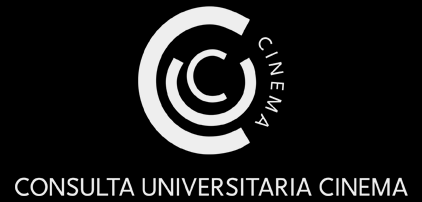Nel corso dell’ultimo anno, la pandemia di SARS-CoV-2 (COVID 19) ha segnato il modo di vivere di pressoché ogni comunità del pianeta, mettendo a repentaglio la vita degli individui, condizionandone le prospettive e i progetti, e trasformando le forme significanti attraverso cui, nelle diverse culture, si organizzano le relazioni sociali (Lorusso, Marrone, Jacoviello, a cura, 2020): la gestione dello spazio, la prossemica, il modo di presentare se stessi, segnato dalla necessità (o dal rifiuto) di indossare maschere protettive (Leone 2020), come dalla diversa centralità assunta dalle interfacce digitali in molte pratiche lavorative.
Insieme a tutto ciò, la pandemia sta lasciando una traccia profonda anche nella cultura visiva di questo nostro tempo, avendo come correlato la produzione di una grande massa di immagini chiamate a rappresentare i cambiamenti sociali di cui sopra, in qualità di documenti testimoniali, di mezzi per raccontare o scongiurare la paura, di strumenti per comprendere e comunicare la diffusione progressiva del virus, di argomenti di supporto per il confronto politico e sociale.
Come ogni grande crisi, dunque, anche la pandemia porta con sé un patrimonio di immagini che concorrono a cambiare o a modulare i modi in cui viene guardato il mondo, facendone riconsiderare le pertinenze e le rilevanze. A differenza però, ad esempio, delle immagini “storiche” in cui si condensa la memoria dell’11 Settembre (Mitchell 2011, Dinoi 2008), le immagini della pandemia appaiono immensamente più numerose e varie, e rendono conto di una pratica diffusa di elaborazione e produzione delle immagini stesse, tanto da apparire come uno dei caratteri stessi del fenomeno pandemico. Diffusione che si traduce in una sorta di “iconodemia” che monopolizza non solo l’universo mediatico, con immagini di cronaca e scientifiche, ma anche quello dei social media, quello dell’arte e addirittura il panorama urbano, attraverso street art e manifesti, e per documentare la quale sono nati progetti diversi, tra cui ci limitiamo a citare, a solo titolo di esempio, il Covid-19 Visual project (https://covid19visualproject.org/it/chapter/una-societa-ferita/5), quello promosso da W.J.T. Mitchell su Critical Inquiry (https://critinq.wordpress.com), o quelli sviluppati per documentare la tematizzazione della pandemia nella street art (https://news.artnet.com/art-world/coronavirus-street-art-1814961).
D’altra parte, come quasi sempre nell’iconosfera, tutte queste immagini nascono in dialogo con altre immagini, già sedimentate, in forma di citazione, rielaborazione, confronto con altre immagini, creando nuove reti di significati che creano relazioni fra la pandemia covid e altri fenomeni sociali del presente e del passato, a partire da altre epidemie, storicamente documentate, o solo temute e immaginate, che hanno lasciato le loro tracce nell’arte, nelle illustrazioni d’epoca (si veda il grande revival delle immagini della pandemia cosiddetta “spagnola”), nel cinema di finzione (Lancioni 2020), aprendo lo spazio per una riflessione sulle forme di una vera e proprio iconografia epidemica.
Gli studiosi interessati a partecipare sono invitati a inviare un proposal entro e non oltre il 14/12/2020. Il proposal deve essere compreso entro le 300 parole (compresa una bibliografia essenziale) e una nota di presentazione dell’autore o degli autori di massimo 100 parole. Tutti i materiali e le comunicazioni relative alla pubblicazione vanno inviati alle mail dei curatori e a quella della redazione:
federica.villa@unipv.it
tarcisio.lancioni@unisi.it
vcs@vcsmimesis.org
Over the last year, the pandemic SARS-CoV-2 (COVID 19) has affected the ways of living of almost every community on earth. It has endangered everyone’s life impacting our own prospects and plans and transforming, in different cultures, the significant forms of the organisation of social relationships (Lorusso, Marrone, Jacoviello, 2020); i. e. the use of space, proxemics, the way of presenting ourselves marked by the necessity (or the refusal) of protective masks (Leone 2020), as well as the new centrality of digital interfaces in the workplace.
Furthermore, the pandemic is having a deep impact on the current visual culture as it has determined the production of a great number of images aimed at representing the above mentioned social change. Such images are testimonial evidence, means to represent or avert fear, tools to understand and describe the progressive spread of the virus and support material for political and social debate.
Like every great crisis, therefore, this pandemic is bringing about a remarkable image heritage that will lead to change or modulate the ways we look at the world and will make us reconsider its significance and relevance. Unlike the “historic” 9/11 images (Mitchell 2011, Dinoi 2008), the images of the pandemic are far more numerous and varied; they in fact account for a common practice of processing and production of images that has become itself one of the main features of the pandemic. This sort of “iconodemic” is monopolizing not only the mass media through report and scientific images, but also the social media, as well as Art and even the urban landscape by means of street art and billboards. A lot of projects have been developed, among which we quote as an example the Covid-19 Visual project
(https://covid19visualproject.org/it/chapter/una-societa-ferita/5), the project promoted by W.J.T. Mitchell on Critical Inquiry (https://critinq.wordpress.com), or the projects developed to show the pandemic theme in street art (https://news.artnet.com/art-world/coronavirus-street-art-1814961).
On the other hand, as it always happens in the iconosphere, all these images result from the dialogue with other images, which are already sedimented, as a quotation, a re-elaboration, a comparison with other images, thus creating new webs of meaning and relations between the Covid-19 pandemic and other present and past social phenomena. This process starts from other pandemics, which are historically documented, or maybe only feared or imagined, and which left traces in art, in vintage illustrations (see the great revival of the images of the so called Spanish influenza), in movies (Lancioni 2020). This opens spaces of thought and discussion on the different forms of an epidemic iconography.
Scholars interested in participating are invited to submit a proposal by 14th December 2020. The proposal should be maximum 300 words long (including a brief bibliography) together with a 100-word presentation of the author/authors. All the materials and the communication regarding publication are to be sent to the editors and the editorial office:
federica.villa@unipv.it
tarcisio.lancioni@unisi.it
vcs@vcsmimesis.org
A reply will be sent by 21st December 2020 to every candidate who will have to send his paper by 22nd February 2021.





